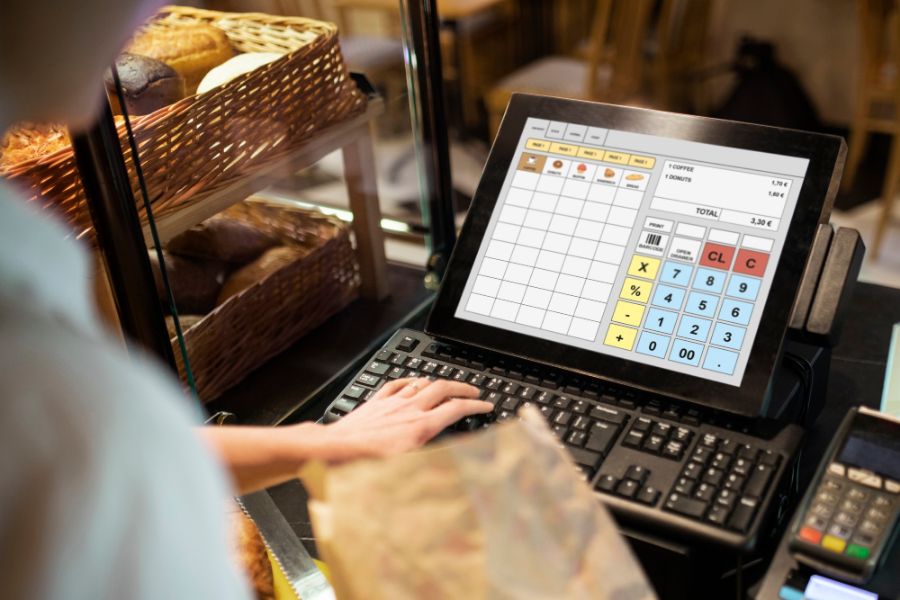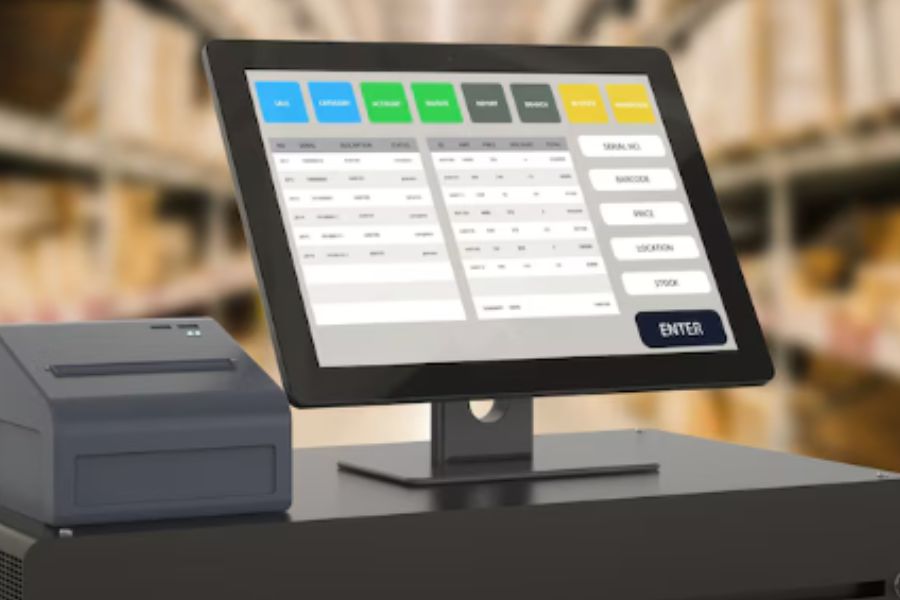In today’s fast-paced retail environment, knowing how to use a cash register efficiently is essential for smooth business operations. Modern cash registers do more than just process transactions—they accept multiple payment types, track inventory, and generate sales reports to help businesses stay organized and competitive.
Cash registers are used to record payment amounts and to handle cash throughout the business day. There are multiple types of cash registers, including electronic registers, iPad cash registers, and other computer-based registers. While each register has some unique features, they all share similarities in their operation.
This guide will walk you through the different types of cash registers, their key functions, and provide a detailed step-by-step process on how to use a cash register effectively. Whether you’re a new cashier, a small business owner, or managing a retail store, mastering these skills will ensure accuracy, speed, and customer satisfaction at checkout.
What is a cash register?
A cash register is an essential business tool used to process sales transactions, record purchases, and manage cash flow in retail stores, restaurants, and other businesses. Traditionally, cash registers were mechanical devices designed to store cash and print receipts, but modern versions now come with digital displays, barcode scanners, and integrated payment processing systems.
Today’s advanced cash registers can handle credit and debit card payments, track inventory, generate financial reports, and even connect to cloud-based POS systems. By streamlining sales and improving accuracy, a cash register plays a crucial role in ensuring efficient business operations and an enhanced customer checkout experience.
Types of cash registers
Different businesses require different types of cash registers; here’s a look at the options that could suit your specific needs.
Electronic cash register (ECR)
Electronic cash registers are the traditional backbone of retail checkout points. Equipped with a cash drawer and an input method, such as a keypad or touchscreen, ECRs are designed for durability and ease of use. Most come with integrated receipt printers and barcode scanners, and they can operate via a direct power source or batteries.
POS cash register
The advent of Point-of-Sale (POS) systems has revolutionized how to use a cash register. These versatile systems offer expanded capabilities including in-depth customization to fit specific business needs. POS registers typically come with scanners and utilize advanced software to conduct crucial business analytics, manage inventory, and evaluate product performance, enhancing the business’s operational efficiency.
Mobile cash register
Mobile cash registers bring portability to the sales process. These systems work similarly to traditional registers but are housed in mobile devices like tablets. They are cost-effective and can be activated quickly to serve as additional checkout points, providing flexibility to manage customer flow, particularly during peak hours.
Cloud-based cash register
The latest innovation in cash register technology is the cloud-based system. These systems harness the power of cloud computing to synchronize operations across multiple devices, be they computers or tablets. A cloud-based cash register is accessible from anywhere with an internet connection, allowing for real-time monitoring and updates from any location, giving businesses unprecedented agility and control over their sales data.
Read more: What is a cash float
Functions of a cash register
Cash registers serve as the hub for transaction processing in retail settings. Understanding their capabilities is essential for efficient business operations.
Basic functions
- Processing a sale: The primary role of a cash register is to facilitate the sale process. It involves scanning items, totaling the cost, accepting payment, and issuing receipts.
- Entering discounts: Cash registers allow the input of discount codes or manually applied price reductions during a sale, ensuring promotions and special offers are reflected in the final price.
- Managing returns and refunds: They efficiently handle transaction reversals, allowing customers to return goods and issue refunds as necessary.
- Voiding transactions: In the event of an error, cash registers can void transactions before finalizing them, ensuring accuracy in sales records and financial reports.
Advanced features
- Inventory tracking capabilities: Modern cash registers can be synced with inventory management systems to track stock levels in real-time, aiding in reorder processes and loss prevention.
- Integration with other business systems: Many cash registers can integrate seamlessly with CRM, accounting software, and other business management tools to centralize operations and data insights.
- Customizable reports and analytics: With advanced systems, users can generate detailed reports on sales trends, peak business hours, customer preferences, and more, providing valuable analytics to inform business strategy.
How to use a cash register in 2025
Using a cash register in 2025 is easier and smarter than ever, thanks to tech upgrades that streamline sales, track inventory, and even integrate with mobile payments and POS systems. Whether you’re running a small shop, a restaurant, or a pop-up store, here’s a simple step-by-step guide on how to use a cash register in 2025:
1. Prepare the cash register: Start by verifying that the receipt tape is loaded correctly, as this is vital for providing customers with transaction records.
2. Set up the cash drawer: Ensure that the cash drawer is organized, with designated spaces for different denominations of bills and coins. Keep larger bills and credit card slips underneath the drawer or in a secure compartment.
3. Scan items: Each product selected by the customer must be scanned by the cash register. This action records the sale and deducts the item from your inventory count while determining the price.
4. Calculate total: Once all items have been scanned, press the “Total” button. The cash register will display the total amount due, which you should communicate to the customer.
5. Process payment: Enter the amount tendered by the customer into the register. If they’re paying in cash, the register will calculate the change due. For credit card payments, process the card through the connected terminal, which will also print a receipt.
6. Issue receipt: Conclude the transaction by providing the customer with their receipt, which verifies their purchase and details the transaction.
Conclusion
Understanding the key functions and utilizing cash registers effectively is the first step toward enhancing operational efficiency in any retail environment. Mastering these pivotal tools enables businesses to conduct transactions more efficiently and accurately, ultimately leading to enhanced customer service and a smoother checkout experience.
For those looking to embrace the full potential of modern retail technology, ConnectPOS offers a suite of solutions tailored to meet these needs. Our systems are designed with the user in mind, ensuring an intuitive experience that complements your business’s best practices. Get in touch to discover how our POS systems can transform your sales process



